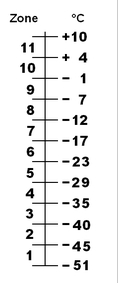After years of using chemical cleaners, I finally tried a
couple of environmentally friendly cleaning products- and they work great! Vinegar and baking soda!
According to the Good Housekeeping Institute, straight 5%
solution of vinegar (the kind you buy at the grocers) kills 99% of bacteria,
82% of molds, and 80 % of viruses.
Kitchen and bathroom:
Kitchen and bathroom:
I use straight vinegar on counter tops, in sinks, and in and
around toilets, to remove germs. Used in
conjunction with baking soda, making a paste, it works great on sinks and
bathtubs removing soap scum. Baking soda with a little water used on counter
tops removes stains, even red wine and tea, and it doesn’t take off the finish.
(You’ll need to rinse it a couple of times as it’s a little gritty.) A vinegar/ water solution in a spray bottle
makes a great window/mirror cleaning solution, and mixing ½ cup vinegar in 1
gallon (4 liters) of water is good for washing lino or vinyl floors (¼ c to 1
gallon for ceramic tiles).
Straight vinegar works really well on chrome to make it shiny,
on shower glass doors to remove hard water spots, and soaking the shower head
in a bowl of vinegar will remove the lime and calcium deposits that clog the
holes. It takes a little longer than the
advertised ‘lime removers’ but I would rather use a natural product than a
chemical that is corrosive and takes the color out of my shirt (as I always
manage to get some on it).
I agree that you still need to turn on the bathroom fan, as
vinegar vapors can be pretty strong, but they do dissipate quite fast.
It’s a product that’s safe around children, still kills the
germs and it’s is friendly to the air, water, and you!
photos of products by: www.armandhammer.com and www.bobvila.com
photos of products by: www.armandhammer.com and www.bobvila.com













